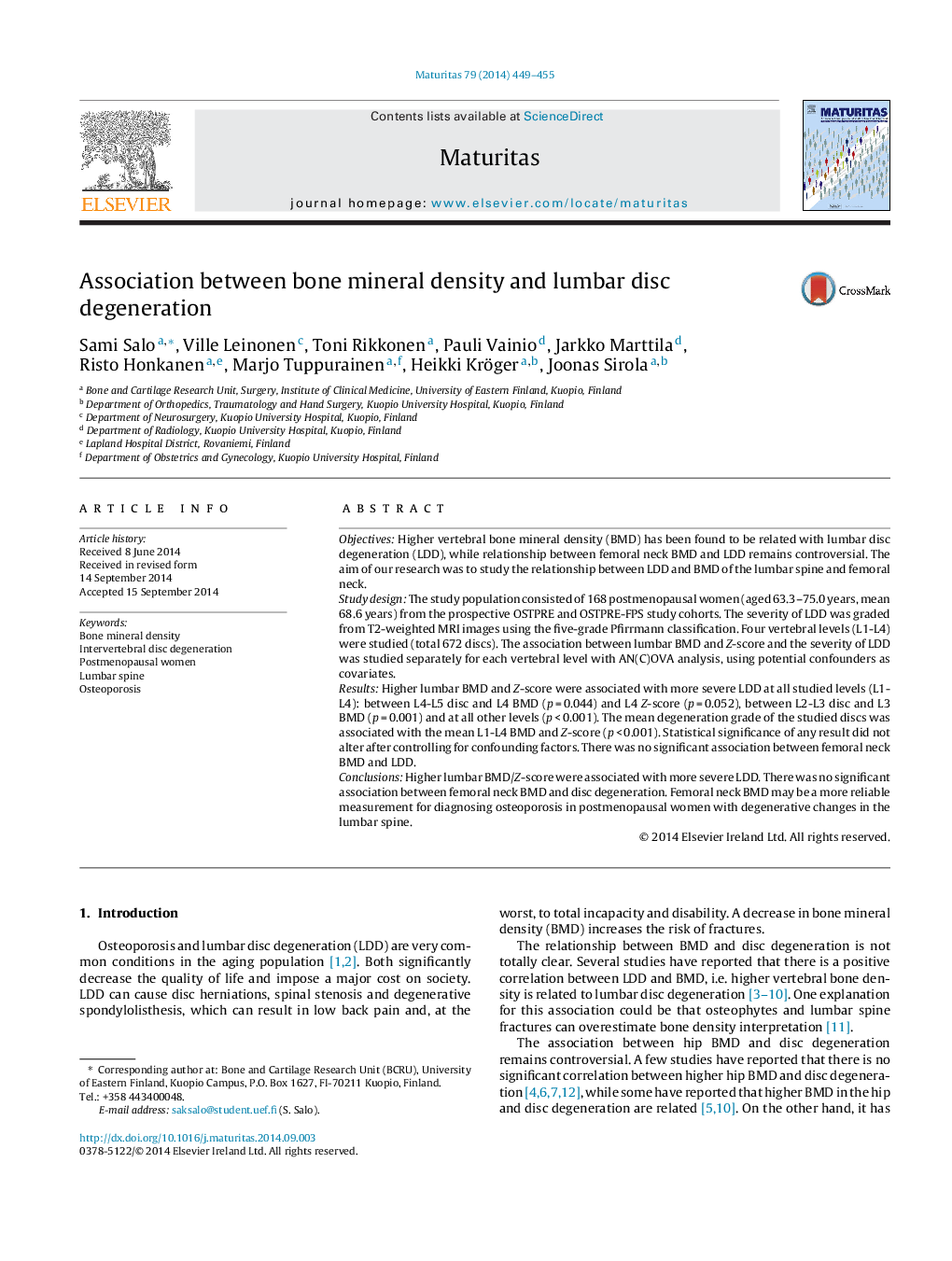| کد مقاله | کد نشریه | سال انتشار | مقاله انگلیسی | نسخه تمام متن |
|---|---|---|---|---|
| 1917185 | 1047882 | 2014 | 7 صفحه PDF | دانلود رایگان |
• Higher lumbar BMD was associated with more severe disc degeneration.
• There was no significant association between femoral neck BMD and disc degeneration.
• Degenerative changes may falsely increase the BMD values in the lumbar spine.
• Lumbar spine BMD may not be a good indicator of osteoporosis for elderly.
• Femoral neck BMD may be more reliable than lumbar BMD in postmenopausal women.
ObjectivesHigher vertebral bone mineral density (BMD) has been found to be related with lumbar disc degeneration (LDD), while relationship between femoral neck BMD and LDD remains controversial. The aim of our research was to study the relationship between LDD and BMD of the lumbar spine and femoral neck.Study designThe study population consisted of 168 postmenopausal women (aged 63.3–75.0 years, mean 68.6 years) from the prospective OSTPRE and OSTPRE-FPS study cohorts. The severity of LDD was graded from T2-weighted MRI images using the five-grade Pfirrmann classification. Four vertebral levels (L1-L4) were studied (total 672 discs). The association between lumbar BMD and Z-score and the severity of LDD was studied separately for each vertebral level with AN(C)OVA analysis, using potential confounders as covariates.ResultsHigher lumbar BMD and Z-score were associated with more severe LDD at all studied levels (L1-L4): between L4-L5 disc and L4 BMD (p = 0.044) and L4 Z-score (p = 0.052), between L2-L3 disc and L3 BMD (p = 0.001) and at all other levels (p < 0.001). The mean degeneration grade of the studied discs was associated with the mean L1-L4 BMD and Z-score (p < 0.001). Statistical significance of any result did not alter after controlling for confounding factors. There was no significant association between femoral neck BMD and LDD.ConclusionsHigher lumbar BMD/Z-score were associated with more severe LDD. There was no significant association between femoral neck BMD and disc degeneration. Femoral neck BMD may be a more reliable measurement for diagnosing osteoporosis in postmenopausal women with degenerative changes in the lumbar spine.
Journal: Maturitas - Volume 79, Issue 4, December 2014, Pages 449–455
